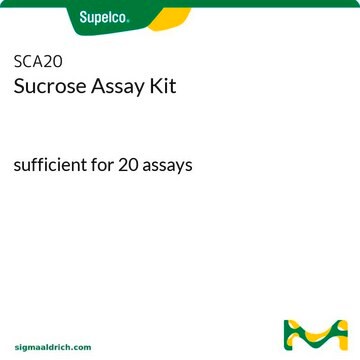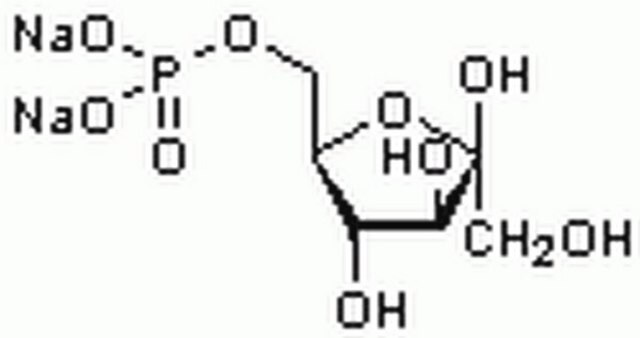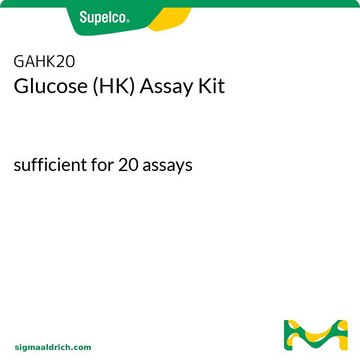MAK020
Fructose-6-Phosphate Assay Kit
sufficient for 100 fluorometric tests
Sinônimo(s):
Fructose-6-P Quantification Kit
About This Item
Produtos recomendados
uso
sufficient for 100 fluorometric tests
método de detecção
fluorometric
doença(s) relevante(s)
cancer
temperatura de armazenamento
−20°C
Descrição geral
Aplicação
Adequação
Princípio
Palavra indicadora
Danger
Frases de perigo
Declarações de precaução
Classificações de perigo
Resp. Sens. 1
Código de classe de armazenamento
10 - Combustible liquids
Ponto de fulgor (°F)
188.6 °F - closed cup
Ponto de fulgor (°C)
87 °C - closed cup
Escolha uma das versões mais recentes:
Certificados de análise (COA)
Não está vendo a versão correta?
Se precisar de uma versão específica, você pode procurar um certificado específico pelo número do lote ou da remessa.
Já possui este produto?
Encontre a documentação dos produtos que você adquiriu recentemente na biblioteca de documentos.
Artigos
We presents an article about the Warburg effect, and how it is the enhanced conversion of glucose to lactate observed in tumor cells, even in the presence of normal levels of oxygen. Otto Heinrich Warburg demonstrated in 1924 that cancer cells show an increased dependence on glycolysis to meet their energy needs, regardless of whether they were well-oxygenated or not.
Nossa equipe de cientistas tem experiência em todas as áreas de pesquisa, incluindo Life Sciences, ciência de materiais, síntese química, cromatografia, química analítica e muitas outras.
Entre em contato com a assistência técnica






